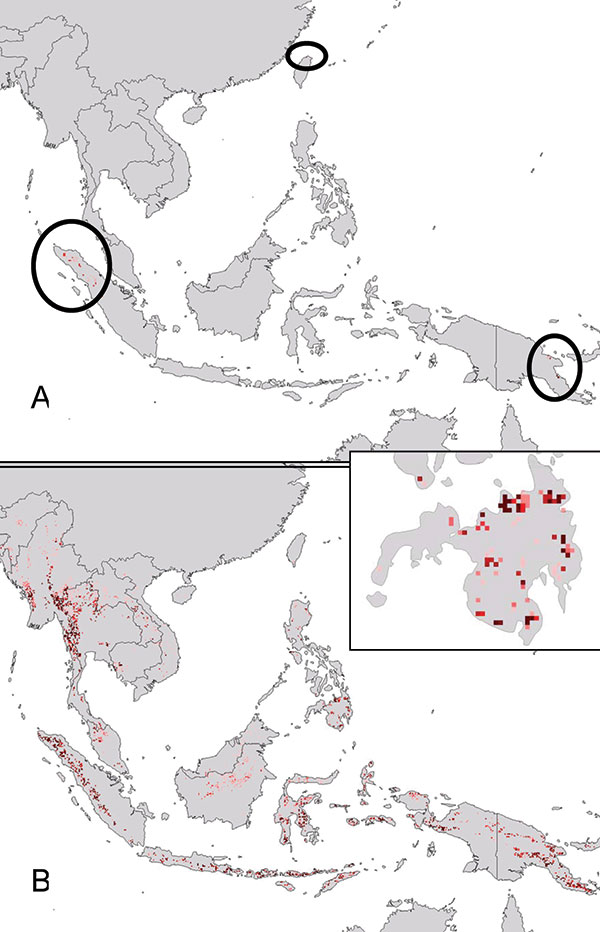Volume 10, Number 1—January 2004
Research
Ecologic and Geographic Distribution of Filovirus Disease
Figure 5

Figure 5. Projection of filovirus ecologic niche models onto southeastern Asia and the Philippines to assess the degree to which possible Philippine distributional areas are predictable on the basis of the ecologic characteristics of African filovirus hemorrhagic fever (HF) occurrences. (A) Projection of model for Marburg HF occurrences (Figure 1D) to southeastern Asia. (B) Projection of model for all filovirus disease occurrences (Figure 1B) to southeastern Asia (the projection of models for Ebola HF occurrences is identical to this map). Inset: detail of projection to the island of Mindanao, in the Philippines. Darker shades of red represent increasing confidence in prediction of potential presence.
1Although filovirus taxonomy undergoes frequent revision, we follow nomenclature most recently established by the International Committee of Taxonomy of Viruses in 2002. Filoviruses consist of two genera. The genus Marburgvirus contains one species, Lake Victoria marburgvirus, with several recognized strains, and Ebolavirus contains four species: Ivory Coast ebolavirus, Reston ebolavirus, Sudan ebolavirus, and Zaire ebolavirus. For simplicity, we refer to the viruses using the unitalicized vernacular (e.g., Ebola Zaire). We use “Ebola viruses” to refer in general to members of Ebolavirus and “Marburg viruses” to refer in general to members of Marburgvirus. The diseases caused by filoviruses are termed Ebola hemorrhagic fever (HF; diseases caused by Ebola viruses) and Marburg HF (diseases caused by Marburg viruses).